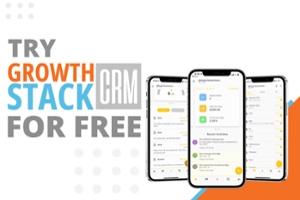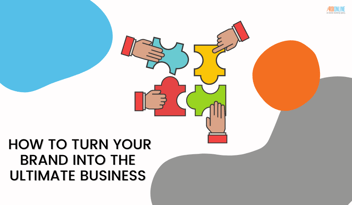3 Takeaways From Building A StoryBrand Book You Can Use for Business
Donald Miller, the author of the book “Building a StoryBrand” talks about how to clarify your message so customers will listen. Donald Miller is also known for his work on Scrantonicity and New York Times bestseller Blue Like Jazz, which was deemed one of the top 10 non-fiction books of 2012 by Time magazine.
Donald wrote Building a StoryBrand as a guide for people who want to add clarity to their marketing messages so they can build strong brands with passionate customer relationships. He has helped organizations such as General Electric, Nike, Starbucks, Red Bull, and Chick-fil-A tell their stories better than ever before.
"Brand clarity is crucial to successfully reaching and engaging your target customers," says Don. "People don’t buy what you do, they buy why you do it. When people understand the ‘why’ behind your brand, they become devoted advocates."
Donald says, "I’ve been listening to the way people speak about their brands for over 20 years, and in most cases, they are simply describing what they do rather than the reason why their customers should care. Once you clarify your message so that it centers on your target customer’s emotional benefit, not just the features of your product or service, people will start paying attention."
This book is not just about the words you use to describe your business, it’s about the steps to clarify and strengthen your brand. Miller suggests, "If you are looking for a quick fix, this book won’t help you. Brand clarity is the result of work, not magic."
It truly is a must-read for brands and firms of all sizes. Whether you're running a multi-billion dollar company, a small business owner, or someone who runs a nonprofit, this book can always teach you the simpler way to effectively communicate who you are, what you do, and the unique value you bring to the people you serve.
Here are three takeaways from Donald Miller's book that you can apply to your business today.
1. Be Clear About Who You Are and What You Do
In the book, Miller suggests that the key to business success is as simple as one word: clarity.
Speaking in Donald's terms (which are explained in detail throughout his book), businesses are brands, and what people really buy into when they choose a brand is the story they can be a part of.
This story is made up of two parts:
- Who you are; and
- What you do.
Most businesses get this wrong, though. They either think their mission statement or some variation of it is enough for them (and their customers) to live by, or they simply don't have one at all. Donald says neither will work if your goal is to grow your business.
What does Donald mean? Donald means that your customers are people, and people are looking for two things when they buy:
- How to survive; and
- How to thrive.
What Donald is Saying
Your mission statement must convey these two basic human needs in a clear way, or it will have no power. Donald Miller uses the example of Starbucks as an example of a company that gets this right.
The Starbucks mission statement is "to inspire and nurture the human spirit – one person, one cup, and one neighborhood at a time."It's clean, crisp, clear, and powerful because it addresses both aspects - what you need when you're struggling (coffee to get through the day), and what you want when you're ready to come alive (a sense of community). Donald's own mission statement is "to teach people how to think about brands in a way that drives growth." Donald says his mission statement addresses both what you need when you're struggling and what you want when you thrive.
If your message isn't clear, no one will listen. Businesses that deliver an unclear message are doomed to fail. This much we know. With so much noise nowadays, especially in the online marketplace, it's the businesses that are clearest and most effective in their communication that will thrive. Author Donald Miller suggests this is essential because customers are humans and humans are all basically looking for two things: how to survive and thrive, and how to spend the least amount of calories at any given moment.
Use this information to boil down your messages into their simplest forms so that they are easily understood and remembered. Your customers will thank you for it... or at least they won’t unsubscribe from your email or click X on your website and start looking at your competitor's offers.
2. Invite Your Customers to be the Hero of the Story
Open the door for your customer into the story your business is telling. Make sure it features them as the hero of the story.
You can do this by sending out an email newsletter that has a narrative or pictorial list of events where the customer's story play an active role in some aspect of what you do, no matter how big or small.
What a Story Looks Like
For example, rather than send out yet another one of those boring customer testimonial emails that read like this: "Jenny's event was awesome! We had a great time. Everyone had so much fun and loved the photo booth!"
Take it up a notch with something like this instead: "When Jenny called us to plan her event, we knew from our conversation that she wanted three things: for everyone to have fun, a photo booth, and the event contents preserved in an album.
We set out on Jenny's big night with all three of these goals in mind. The volume was turned up, the dance floor was packed, and we snapped hundreds of photos throughout the night. When our work was finally done well past midnight, Jenny came over to thank us for a job well done. As we showed her the photos, she became overwhelmed with joy. She played with the images of this night that were special to so many people and will be remembered for a long time."
The framework based on StoryBrand by Donald Miller teaches us to recognize your customer in some way and tie it into the story you’re telling.
If one of your customers served on a nonprofit board for children's literacy, talk about how that ties into what they do as part of your business partnership.
Consider these other storytelling ideas:
- Is there something specific about the place where they use your product or service?
- Have you incorporated any aspect of their personal interests or hobbies? Are they athletes?
- How did they come up with their idea for a business like theirs?
Consider the last time you went shopping at a store. Perhaps you felt a sense of joy as you walked through the front door because someone working there, maybe even dressed up as your favorite superhero, helped direct you to where you were going. These interactions make an impact on us – they don't feel forgettable or mundane.
Avoid coming off as just another transaction with little thought about what service means for your customers beyond handing them some goods and taking their money in return. The StoryBrand Framework will always go back to the fact that the customer is the hero.
3. Match Your CTAs to Your Customer's Needs
The call to action is one of the most important parts of a website. It's what convinces visitors that they've found the best option for them, and it's what makes them take that final call to action: clicking on a button or link.
And yet so many brands make this call to action weak, confusing, and unclear.
You could be losing customers if your call-to-action doesn't match their needs in both tone and content.
When writing a call-to-action, first ask yourself why someone would click on that button: What actions will they take, and what do you want them to accomplish?
For example, if someone found their way to your call-to-action through a blog post about the product or service you offer, then you know that you're speaking to someone who wants more information. They might be interested in buying, but they might just be looking for a justification on whether it's the right purchase for them.
Let's say that people came to your call-to-action from an ad campaign targeted at people who were already familiar with your brand's story. They've probably seen some ads before showing either testimonials or images of happy customers using your product or service on social media. In this case, they're already sold on your call-to-action. You want them to call or click through and take immediate action.
.png?width=1200&name=84371%20-%203%20Takeaways%20(2).png)
CTA Tips
When it comes to call-to-actions, the stronger you can make them, the better. This means that it's best to use active verbs in your call:
- "Find out,"
- "Call Now,"
- "Buy Now," and so on.
You also need to be specific about what you're offering and how you want people to call and act upon it — whether it's subscribing to an email list or reaching out for a callback. If you want someone to give you a call (or emailing your team), then say so in the call: "Call us today."
You can also use call-to-action phrases that immediately explain the benefit of the call. "See our latest products" or "Get a quote now" are both much more effective than call-to-actions that make people work for the information, like "Discover how you can earn," or even just "Learn more."
If your call-to-action is a button and not a link, then you should test making it round with an X in the center. This has been shown to increase conversions by 20%. Also, try changing its color. While blue is usually safest, you might see better results with green, yellow, orange, red, or purple depending on what most closely aligns with your brand and product or service.
CTAs Defined Clearly
Don't be cute; be clear.
Because clearer is better than clever, 100% of the time. If you're writing a call-to-action and it's not clear what someone should do, then don't use it. You might be losing conversions that way!
Don't be afraid to call them out with a line to the tune of, "Don't just stand there - call us today!" Make sure that your call is catered to the needs of their current situation.
The StoryBrand Framework teaches us that by writing effective calls-to-action and getting more customers, you'll boost your revenue and make for happier consumers along the way!
In marketing, it's important to always remember the customer is your hero. Customers need a solution for their problems and you are there as their guide. Your call-to-action should match what they want in both tone and content so that you can convince them to take action. Don't be afraid of being clear because clearer is better than clever all the time!
A lot of business owners and marketers spend too much time trying to be clever with their marketing message so customers end up confused. They think that if they come up with an abstract message, it'll bring them more customers willing to buy from them. But even though being clever sounds great on paper, in reality, it's not as effective compared to building a straightforward storybrand.
Clever messages may work for some people, but others find them confusing and tiring–and you will never know which type your target market falls into until you try both approaches out. Once you realize building a StoryBrand is better than trying to be clever all the time, your business starts to become more customer-oriented and productive. No more wasting your time, energy, attention, and money on ineffective processes.
You begin to really listen to your customers, identify their needs and wants, and create products and services, and sell solutions that cater to them. You start to position yourself and your offer as something valuable and worthy of their time, energy, attention, and money.
Now that you know that being clear is the way to go instead of being clever all the time, it's time for you to learn how it all works so you can set up a marketing campaign today.
We were one of the first StoryBrand-certified agencies in the country with years of experience in simplifying our client's marketing. We're in the business of taking away the complications of running a business by creating marketing campaigns that work.
If you want to take an expert approach in clarifying your message so your customers will listen, we can help you with that!
Click here for more valuable information!
See How GrowthStack CRM Can Help You
If you're looking for a CRM that can help you clarify your brand message, invite customers to be the hero of the story, and match your call-to-action to your customer's needs, then you need to check out GrowthStack CRM.
GrowthStack CRM is a powerful tool that can help you automate your marketing, sales, and customer support processes. This will free up your time so you can focus on what you do best: building relationships with your customers.
With GrowthStack CRM, you can:
- Create clear and concise marketing messages that resonate with your target audience
- Personalize your customer interactions to make them feel like the hero of the story
- Track your results so you can see what's working and what's not
If you're ready to take your business to the next level, then sign up for a free trial of GrowthStack CRM today.






